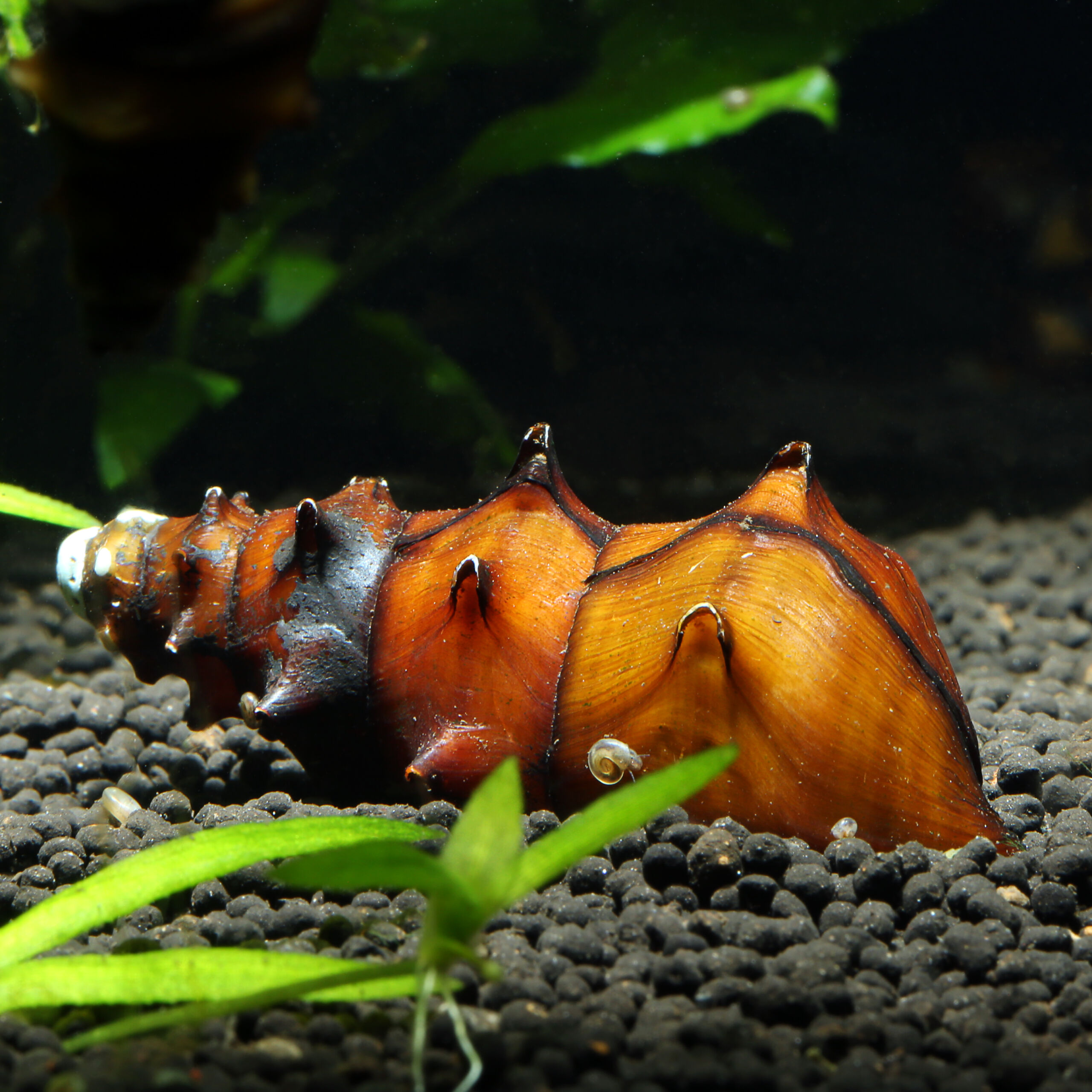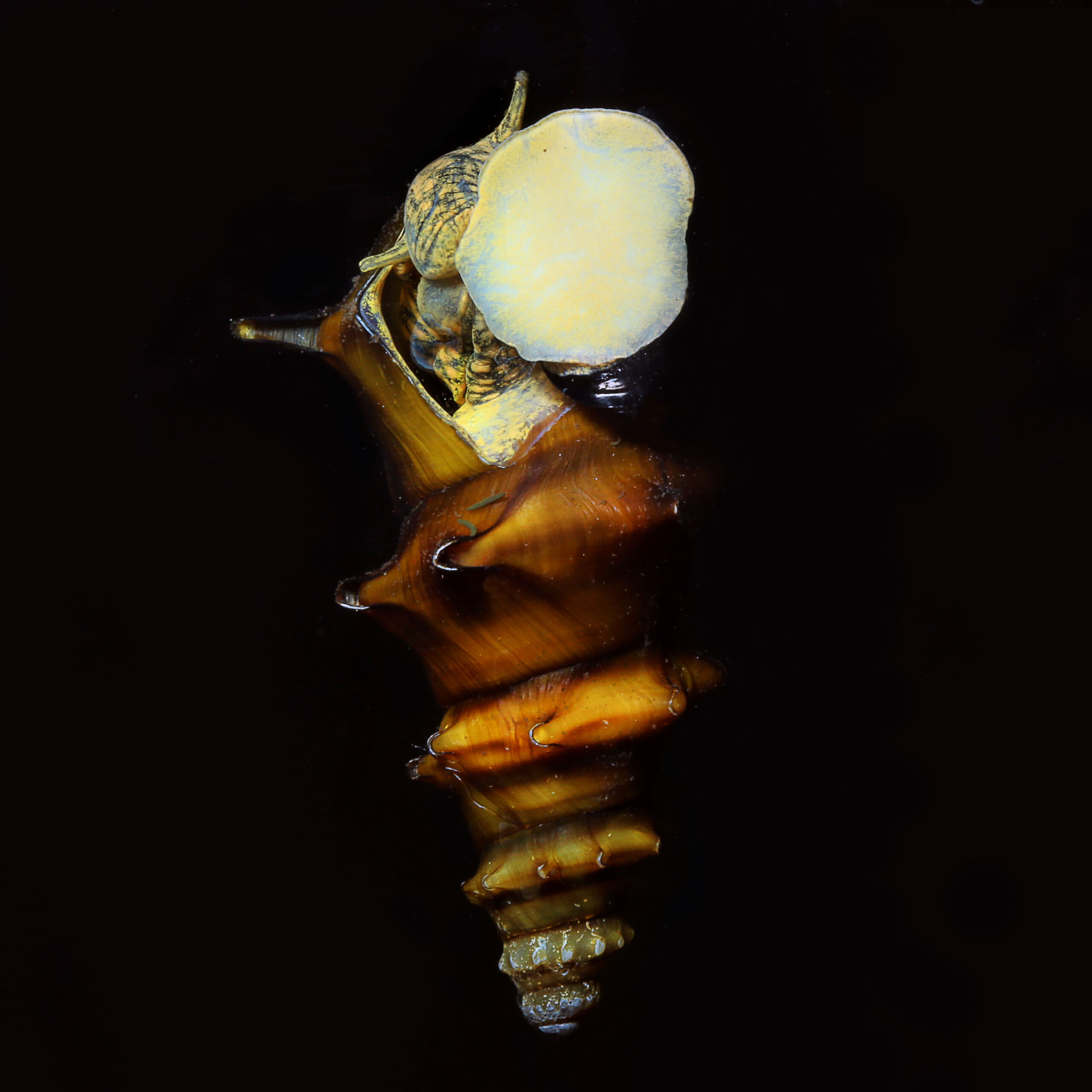Pagoda Snail
Brotia pagodula
The Pagoda Snail is not only pretty, but also a great algae eater.
- very good algae eater
- pretty, horned housing
- slow reproduction
1 in stock
 Delivery in a few working days
Delivery in a few working days
 Free shipping from €60 across Austria
Free shipping from €60 across Austria





Important data
Product description & details
Brotia pagodula, also known as the Pagoda Snail, Porcupine Snail or Horned Armour Snail, is native to Thailand and Myanmar in Southeast Asia. This freshwater snail is characterized by its appetite for algae and its distinctive appearance. Their shell is dome-shaped and brown to dark brown in color. On the surface of the shell, which is up to 5cm long, there are numerous small spines.
Care in the aquarium
The Pagoda Snail is easy to care for in the aquarium. Due to its size, it can be kept in aquariums from 54 liters or 60cm edge length. A soft substrate such as sand, soil or fine gravel is ideal, as the Pagoda Snail likes to dig in it. In contrast to tower snails of the genus Melanoides, the Pagoda Snail does not bury itself completely and remains visible in the aquarium. As with most species of snails, medium to hard water is ideal, as the shell can be damaged if the water is too soft. This snail species is extremely peaceful and can easily be socialized with fish and invertebrates that require similar water parameters and do not prey on it. The snail should not be placed in new tanks, but only in well-established tanks.
Feeding
Brotia pagodula feeds primarily limnivorously, i.e. on growth in the form of algal deposits and bacterial films. It also searches the ground for food particles. Supplementary feeding is usually only necessary if the snail does not have enough biofilm in the aquarium to feed from. Spirulina and chlorella, as well as scalded leaves such as nettle, are ideal as feed.
Sexual characteristics and breeding
The Pagoda Snail has separate sexes, but the differences cannot be detected from the outside. If both sexes are present, this viviparous snail species can usually be bred without much effort. However, since the reproduction rate is relatively low and only a few young animals are released every few months, you don’t have to worry about overpopulation.






